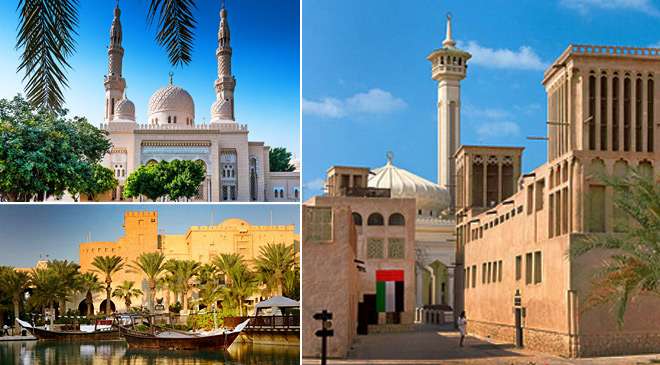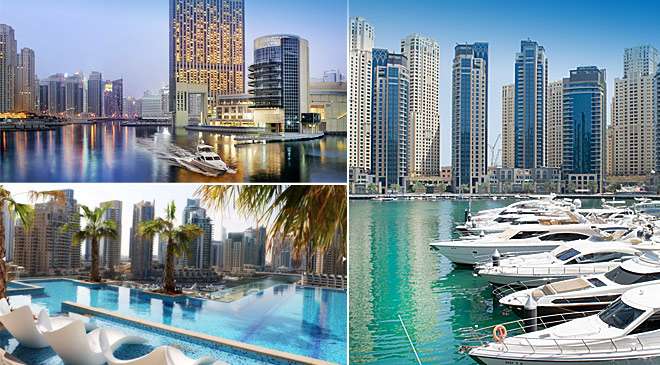Dubai is a city that is known for its modernity and futuristic architecture. However, amongst the towering skyscrapers and cutting-edge technology, there are hidden gems that tell the story of the city’s rich history. From ancient ruins to museums that showcase the city’s heritage, Dubai has a wealth of historical sites waiting to be explored. These sites offer a glimpse into the past and a chance to understand the city’s cultural roots. Join us as we take a journey through time and explore the historical sites of Dubai.
Sheikh Saeed Al Maktoum House
Sheikh Saeed Al Maktoum House is one of the most important historical sites in Dubai. It was built in 1896 and was the home of Sheikh Saeed Al Maktoum, the former ruler of Dubai and grandfather of the current ruler, Sheikh Mohammed bin Rashid Al Maktoum. The house is located in the Al Shindagha area along the Dubai Creek and has been restored and turned into a museum. The museum showcases the traditional architecture and lifestyle of Dubai’s ruling family during the early 20th century. Visitors can explore the various rooms of the house, including the majlis (sitting room), bedrooms, and kitchen. The museum also has a collection of old photographs and documents that provide a glimpse into the history of Dubai and the ruling family. Sheikh Saeed Al Maktoum House is a must-visit for those interested in the history and culture of Dubai.
Dubai Museum
Dubai Museum is one of the oldest and most popular museums in Dubai. It is located in the Al Fahidi Fort, which was built in 1787 and is the oldest existing building in Dubai. The museum showcases the history and culture of Dubai, from its early days as a fishing and pearl diving village to the modern city it is today. Visitors can explore the various exhibits, including traditional Bedouin life, the growth of the city, and the importance of the pearl industry. The museum also has an underground section that features life-size dioramas of various scenes from Dubai’s history, such as a souk (marketplace), a mosque, and a date farm. The museum is a great place to learn about Dubai’s rich cultural heritage and its transformation from a small village to a global city.
Jumeirah Mosque
Jumeirah Mosque is a stunning example of Islamic architecture located in Dubai, United Arab Emirates. It is one of the most famous landmarks in Dubai and a popular tourist attraction. The mosque was built in the traditional Fatimid style, with white stone walls and two minarets. The mosque’s interior is equally impressive, with intricate carvings, Arabic calligraphy, and beautiful stained glass windows. The mosque is open to non-Muslim visitors for guided tours, providing an opportunity to learn about Islam and the Emirati culture. The mosque’s serene and peaceful environment makes it an ideal place for prayer, contemplation, and reflection.
Naif Museum
The Naif Museum in Dubai is a cultural gem that offers visitors a glimpse into the history and heritage of the city. Located in the heart of the historic Naif district, the museum is housed in a beautifully restored building that dates back to the early 20th century. Inside, visitors can explore a range of exhibits showcasing the traditional way of life in Dubai, including displays of traditional clothing, tools, and utensils. One of the highlights of the museum is the recreation of a traditional Emirati majlis, or sitting room, complete with intricately woven carpets and ornate furnishings. In addition to its permanent exhibits, the Naif Museum also hosts a range of temporary exhibitions and cultural events throughout the year, making it a must-visit destination for anyone interested in the rich history and culture of Dubai.
Bastakiya Quarter
The Bastakiya Quarter is a historic neighborhood located in the heart of Dubai. This area is known for its traditional architecture and narrow winding streets, which provide a glimpse into the city’s rich cultural heritage. The history of the Bastakiya Quarter dates back to the late 19th century, when Persian merchants first settled in the area. These merchants were known as ‘Bastakis’, and they built their homes and shops using traditional materials such as mud, stone, and wood. Over the years, the Bastakiya Quarter became a bustling commercial hub, with a variety of shops, cafes, and markets. However, by the 1970s, many of the buildings in the area had fallen into disrepair, and plans were made to demolish the neighborhood and replace it with modern buildings. Visitors to the Bastakiya Quarter can explore the narrow streets and alleyways, admire the traditional architecture, and visit a variety of museums, galleries, and cultural centers. The area is also home to a number of restaurants and cafes, serving traditional Emirati cuisine and international dishes.
Jumeirah Archaeological Site
Jumeirah Archaeological Site is an ancient settlement located in Dubai, United Arab Emirates. It is believed to have been inhabited during the 6th century AD and was discovered in 1969 during the construction of a school. The site contains the remains of a mosque, a well, a residential area, and other structures that provide insight into the daily life of the people who lived there. The site is open to the public and is a popular destination for tourists and history enthusiasts who are interested in learning more about the region’s rich cultural heritage.
Al Fahidi Historical District
Al Fahidi Historical District, located in the heart of Dubai, is a charming neighborhood that reflects the city’s rich cultural heritage. The district boasts traditional wind-tower houses, narrow lanes with hidden courtyards, and old-fashioned bazaars selling local handicrafts. It’s a perfect destination for history buffs and anyone looking to immerse themselves in the authentic Emirati culture. The district also features several museums, art galleries, and cultural centers, providing visitors with a glimpse into the region’s past and present.
Dubai Heritage Village
Dubai Heritage Village is a unique attraction that provides an insight into the traditional way of life in the emirate. Located in the heart of the city, the village showcases the cultural and historical heritage of Dubai through various exhibits and activities. Visitors can experience the traditional Emirati lifestyle by exploring the reconstructed old houses, watching craftsmen at work, and enjoying cultural performances such as dance and music. The village also has a souk where visitors can purchase traditional handicrafts and souvenirs.
Etihad Museum
Etihad Museum is a modern and interactive museum located in Dubai, United Arab Emirates. The museum offers a glimpse into the history of the United Arab Emirates, specifically the formation of the federation and the role of the late Sheikh Zayed bin Sultan Al Nahyan. The museum features multimedia exhibits, interactive displays, and rare artifacts that provide a unique insight into the country’s rich cultural heritage.
Bur Dubai Abra Dock
Abra Dock is a popular tourist spot in Bur Dubai. It is a traditional dock where tourists can take a ride on the traditional wooden boats called Abras, which ferry passengers across the Dubai Creek. It is a bustling area with several shops and restaurants selling traditional Emirati food and souvenirs. The dock is also a great place to experience the local culture and witness the daily activities of the locals.
Heritage House
The Heritage House in Dubai is a significant historical landmark that showcases the traditional lifestyle and architecture of the Emirati people. This restored house, located in the Al-Ras area of Dubai, dates back to the early 20th century and offers visitors a glimpse into the traditional way of life in Dubai before the oil boom. The house features original furniture, utensils, and traditional clothing, providing a fascinating insight into the customs and traditions of the Emirati people.
Dubai is a city rich in history, and there are plenty of sites to explore for those interested in learning about its past. From the ancient Al Fahidi Fort to the grandeur of the Jumeirah Mosque, each historical site in Dubai tells a unique story about the city’s growth and cultural heritage. The best way to experience Dubai’s history is to visit these sites yourself and immerse yourself in the city’s vibrant past. So, pack your bags, grab your camera, and get ready to discover the historical wonders of Dubai!

